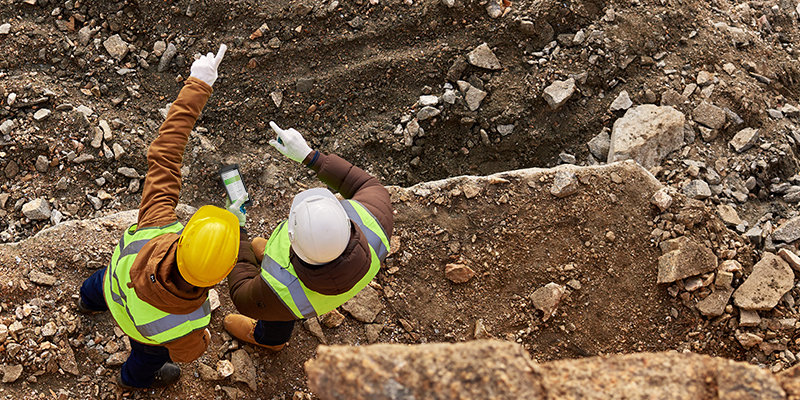
Efficiency and precision are crucial factors in the realm of road construction, ensuring on-time project completion and minimizing traffic disruptions. Historically, road construction heavily depended on physical stakes and manual measurements, which often resulted in errors, delays, and escalated expenses. The traditional road construction process involved the placement of physical stakes and continuous measurements to guide contractors during each construction phase. This method was not only time-consuming but also susceptible to inaccuracies caused by human errors and environmental factors.
Nevertheless, the Oregon Department of Transport (ODOT) has achieved a groundbreaking transformation in road construction methods by embracing a stakeless approach empowered by rugged tablets.
Benefits of Stakeless Road Construction with Rugged Tablets
- Enhanced Accuracy and Precision
Rugged tablets equipped with advanced GPS and GIS technologies provide real-time data, allowing contractors to precisely determine the location and depth of construction elements. This minimizes errors, eliminates the need for physical stakes, and ensures adherence to project specifications.
- Increased Efficiency and Cost Savings
The use of rugged tablets eliminates the time-consuming task of manually measuring and setting up stakes. This streamlined approach reduces construction time, enhances productivity, and ultimately saves costs for both construction companies and taxpayers. All the money saved up can then be used for more important construction needs like Efficient Mini Piling Equipment hire.
- Improved Communication and Collaboration
Rugged tablets enable seamless communication between project stakeholders, including engineers, contractors, and surveyors. Real-time data sharing and collaboration on a digital platform promote better coordination, reduce misunderstandings, and accelerate decision-making processes.
- Enhanced Safety
By minimizing the need for workers to physically place and maintain stakes, the stakeless approach improves on-site safety. With rugged tablets in hand, construction personnel can focus more on their surroundings, mitigating potential hazards and accidents. Getting your workers into a Traffic Control Course can also improve road site safety.
Lessons Learned from the Oregon Department of Transport’s Case Study
The Oregon DOT’s successful implementation of stakeless road construction with rugged tablets offers valuable insights for other transportation departments and construction agencies.
Here are some key lessons learned:
- Comprehensive Training: Prior to the deployment of rugged tablets, adequate training must be provided to all stakeholders to ensure a smooth transition. Familiarity with the tablet’s functionalities and software empowers construction personnel to leverage its capabilities effectively.
- Reliable Hardware and Software: Investing in rugged tablets specifically designed for construction environments ensures durability and resilience against harsh conditions. Additionally, utilizing robust software solutions that integrate seamlessly with existing construction management systems optimizes workflow efficiency.
- Data Security and Backup: Implementing stringent data security measures and regular backup procedures safeguard critical project information from loss or unauthorized access. ODOT employed encrypted data transmission and automatic cloud backups to protect their valuable construction data.
The Oregon Department of Transport’s stakeless road construction approach utilizing rugged tablets has revolutionized the construction industry by improving accuracy, efficiency, and collaboration.
By eliminating the reliance on physical stakes and embracing cutting-edge technology, ODOT has successfully completed road construction projects in a more timely and cost-effective manner. This serves as a testament to the transformative power of adopting innovative solutions, making stakeless road construction a promising path toward a future of enhanced infrastructure development.

